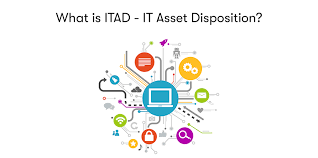FACTS! FACTS!!
Chinua Achebe
Born Nov. 16, 1930, Ogidi, Nigeria
Died March 21, 2013, Boston, Mass., U.S.
Nigerian Igbo novelist. Concerned with emergent Africa at its moments of crisis, he is acclaimed for depictions of the disorientation accompanying the imposition of Western customs and values on traditional African society.
Things Fall Apart (1958) and Arrow of God (1964) portray traditional Igbo life as it clashes with colonialism. No Longer at Ease (1960), A Man of the People (1966), and Anthills of the Savannah (1987) deal with corruption and other aspects of postcolonial African life. Home and Exile (2000) is in part autobiographical, in part a defense of Africa against Western distortions. In 2007 Achebe won the Man Booker International Prize.
AWARDS
peace prize of the German book
2002
International booker Prize 2007
st Louis literally Award 1999
The Dorothy and Lilian Gish Award 2010
#facts
#Myalo_community
#Chinua_Achebe
Chinua Achebe
Born Nov. 16, 1930, Ogidi, Nigeria
Died March 21, 2013, Boston, Mass., U.S.
Nigerian Igbo novelist. Concerned with emergent Africa at its moments of crisis, he is acclaimed for depictions of the disorientation accompanying the imposition of Western customs and values on traditional African society.
Things Fall Apart (1958) and Arrow of God (1964) portray traditional Igbo life as it clashes with colonialism. No Longer at Ease (1960), A Man of the People (1966), and Anthills of the Savannah (1987) deal with corruption and other aspects of postcolonial African life. Home and Exile (2000) is in part autobiographical, in part a defense of Africa against Western distortions. In 2007 Achebe won the Man Booker International Prize.
AWARDS
peace prize of the German book
2002
International booker Prize 2007
st Louis literally Award 1999
The Dorothy and Lilian Gish Award 2010
#facts
#Myalo_community
#Chinua_Achebe
FACTS! FACTS!!
Chinua Achebe
Born Nov. 16, 1930, Ogidi, Nigeria
Died March 21, 2013, Boston, Mass., U.S.
Nigerian Igbo novelist. Concerned with emergent Africa at its moments of crisis, he is acclaimed for depictions of the disorientation accompanying the imposition of Western customs and values on traditional African society.
Things Fall Apart (1958) and Arrow of God (1964) portray traditional Igbo life as it clashes with colonialism. No Longer at Ease (1960), A Man of the People (1966), and Anthills of the Savannah (1987) deal with corruption and other aspects of postcolonial African life. Home and Exile (2000) is in part autobiographical, in part a defense of Africa against Western distortions. In 2007 Achebe won the Man Booker International Prize.
AWARDS
peace prize of the German book
2002
International booker Prize 2007
st Louis literally Award 1999
The Dorothy and Lilian Gish Award 2010
#facts
#Myalo_community
#Chinua_Achebe
Promote this post for better reach
Beitrag boosten






